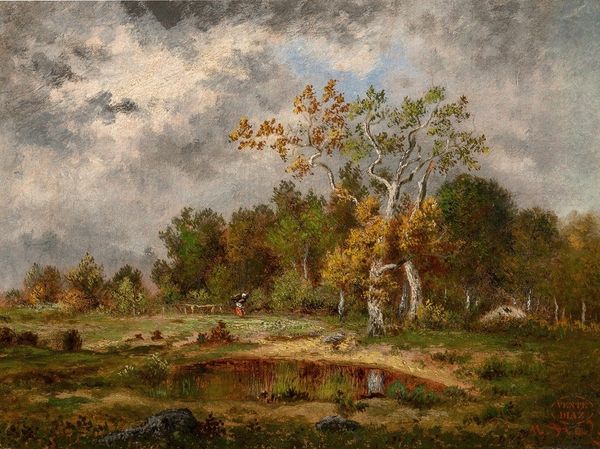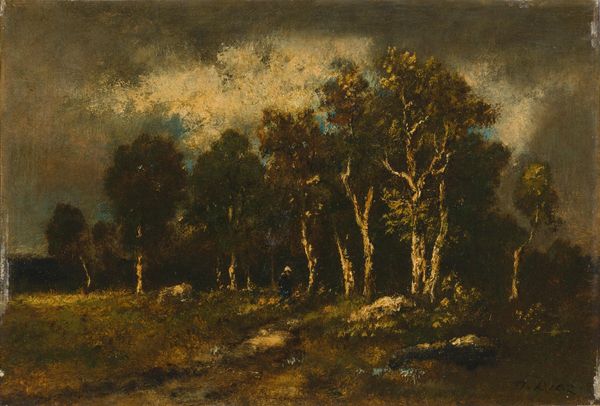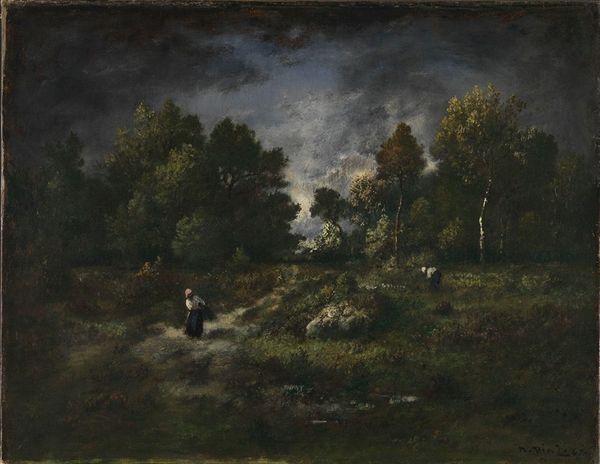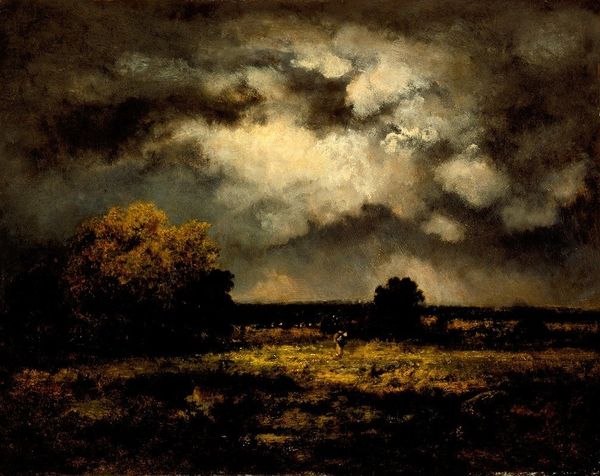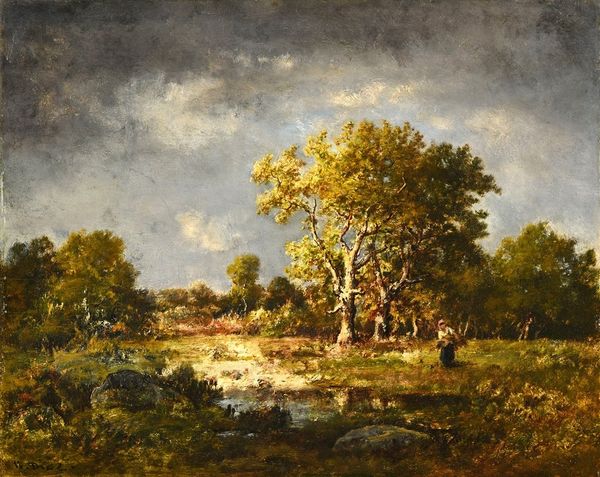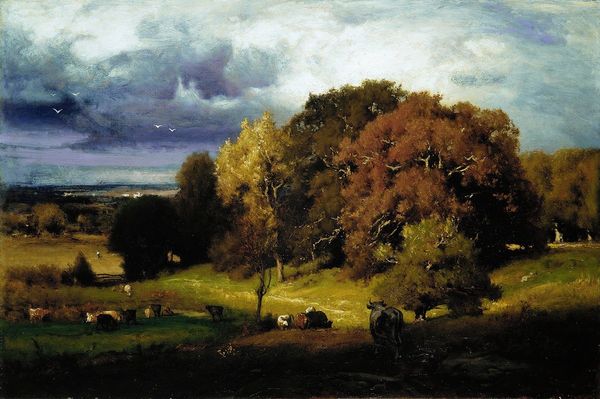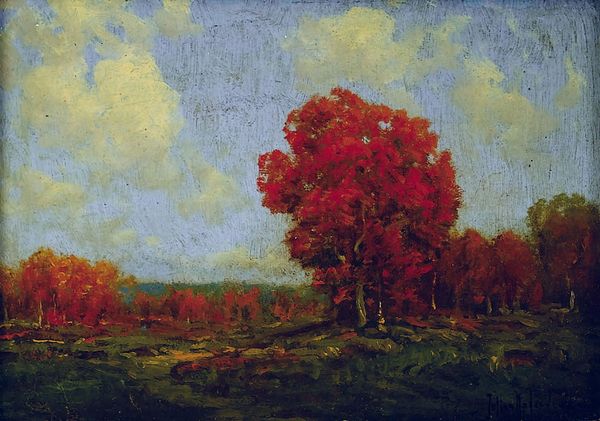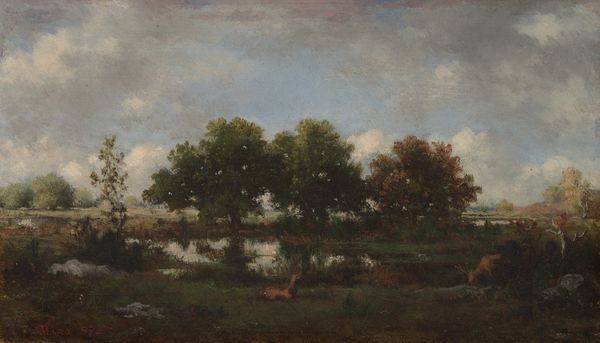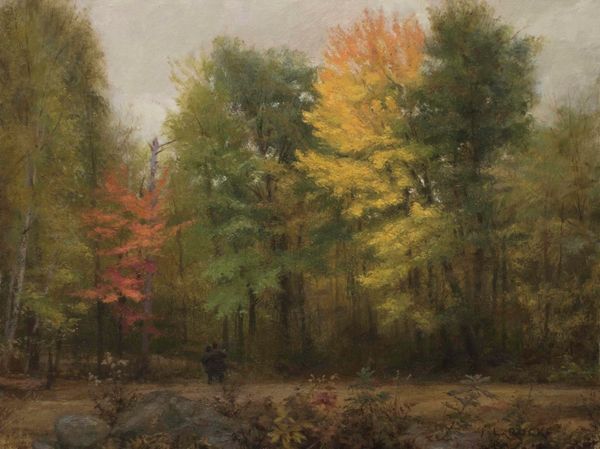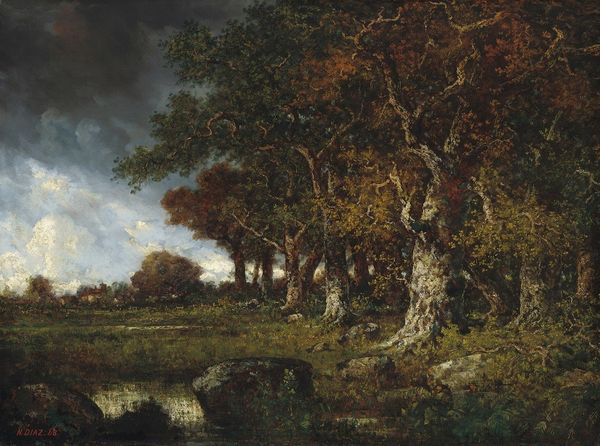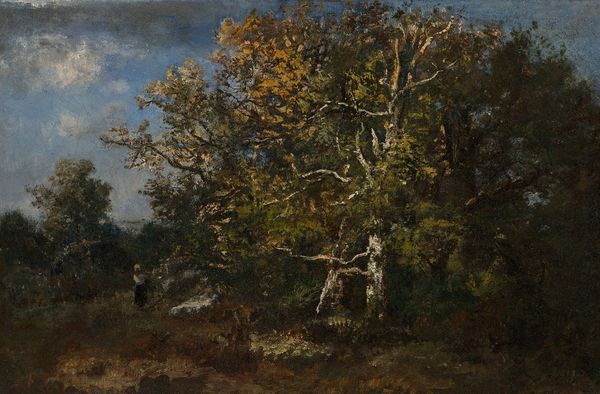
Copyright: Public Domain: Artvee
Narcisse-Virgilio Diaz painted this landscape, Ciel d’orage, with oil, capturing the moment before a storm. The darkened sky presses down upon the illuminated trees, creating a sense of unease. The approaching storm, heavy with symbolic weight, carries echoes of the sublime found in earlier Romantic landscapes. The image is not merely a depiction of weather; it’s a projection of inner turmoil. Think of the Deluge depicted by Michelangelo on the Sistine Chapel ceiling, where the storm embodies divine wrath and human suffering. The storm is a recurring motif across eras, embodying the power of nature and humanity's vulnerability. Consider how the motif of the storm has evolved. In ancient myths, storms were often attributed to angry gods, whereas, by the 19th century, they became symbols of emotional intensity, mirroring human psychology. Just as the Romantics found inspiration in ruins, Diaz finds it in the tempestuous skies. The emotional intensity embedded in the image engages our subconscious, stirring collective memories of nature's power. The storm persists as a symbol, resurfacing and evolving.
Comments
No comments
Be the first to comment and join the conversation on the ultimate creative platform.

